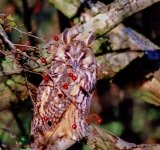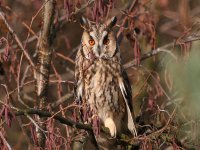Jaff
Registered Member
imaxfli said:Are the SE and LE owls of Europe the same as North America????...
I think they are Asio flammeus for SEO's and Asio otus for LEOs. Just check in one of your bird books to see if it's the same.
It seems to me though that SEO's are almost global, I saw a documentary about the Galapagos Is. not so long ago and they even have them there!
Jaff
Edit: Just thought I'd include this link if it helps anyone. Only saw LEO's for myself a fortnight ago at this place. Pretty good views as they're very close to the path.
http://www.birdforum.net/showthread.php?t=72800&highlight=Marton+Mere
Last edited:






